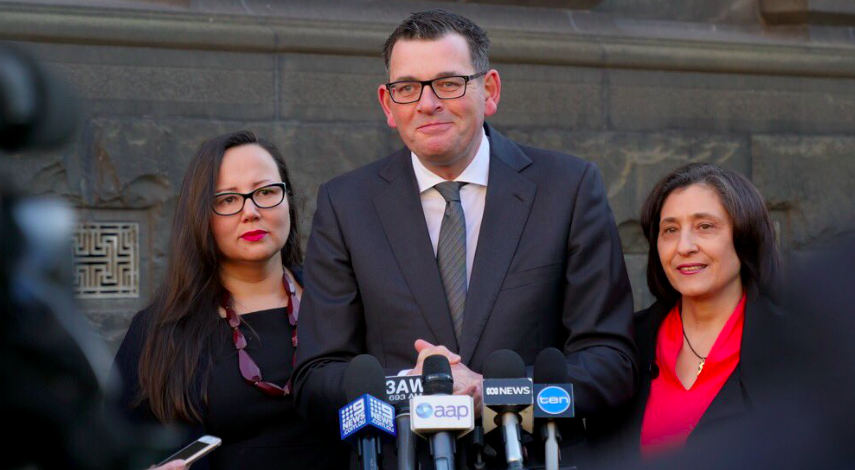Half of Victoria’s energy could come from renewable energy source by 2030, under a new bill the Andrews Labor Government introduced to the parliament on Tuesday. By boosting renewable energy in Victoria, the government is looking to create thousands of jobs, put more energy into the grid and drive down energy prices.
The Labor government has already legislated Victoria Renewable Energy Target (VRET) of 25% by 2020 and 40% by 2025. At last year’s election, it promised to expand the target to 50% by 2030. “VRET has helped create a jobs boom – increasing it will mean more jobs, more investment and lower power bills,” Minister for Energy, Environment and Climate Change Lily D’Ambrosio. “These targets help industry to invest with certainty, creating local jobs – particularly in regional Victoria.”
The economic perks of such ambitious renewable energy target proposed under the Renewable Energy (Jobs and Investment) Amendment Bill 2019 are numerous. The 50% VRET is expected to create around 24,000 jobs by 2030 and provide certainty and investor confidence for the renewable energy industry, driving an additional $5.8 billion in economic activity in Victoria.
Putting more renewable energy on the grid will also drive down the cost of power for Victorians – delivering savings of around $32 a year for households, $3,100 a year for medium businesses and $150,000 each year for large companies. The increased target will also help drive down emissions – achieving the 50% VRET by 2030 is the equivalent of taking 655,000 cars off the road for a year.
Finally, VRET will boost TAFE enrollments – with Federation University establishing a dedicated Global Wind Organisation Standard Course to give Victorians the skills they need for work in this booming industry.“Victoria is the renewable energy capital of Australia and strengthening the VRET in law will keep it that way – boosting jobs, reducing emissions and driving down energy prices,” D’Ambrosio said.
Mixed record
The VRET has already been enormously fruitful. According to Green Energy Markets’ June report, the state is already close to achieving its target of 40% of Victorian power generation coming from renewables by 2025. To achieve the 2030 target, GEM finds the state requires about 2,000 MW of further projects or only a further two renewable energy auctions similar in scale to the one it concluded in 2018 (928 MW).
Boosting the VRET is meant to build on the government’s work to cut power bills for Victorians, ranging from the $50 Power Saving Bonus to the Solar Homes program. Designed to subsidise the cost of solar panel energy systems, solar hot water systems or battery storage for homes with existing solar panels for 770,000 homes over the next 10 years, the Solar Homes program has had a number of side effects and created boom-bust cycles for the state solar industry.
As protests continue against the pronounced impacts the monthly cap on PV installs is having on local installers, industry bodies have proposed a number of measures to reform the Solar Homes process, including reducing the annual income eligibility threshold, increasing the number of rebates available by reducing the value of each rebate, and/or bringing forward future rebates to remove the months of pent-up demand which is causing big problems. On top of this, industry voices have called for streamlining the technically challenging application process and verification measures.
With $1.3 billion needed for the full rollout, however, the Solar Homes program was one of the major winners in this year budget, alongside $3.8 billion plan to build new hospitals, more than $1 billion for schools and a $27.4 billion suburban transport blitz.
This content is protected by copyright and may not be reused. If you want to cooperate with us and would like to reuse some of our content, please contact: editors@pv-magazine.com.









1 comment
By submitting this form you agree to pv magazine using your data for the purposes of publishing your comment.
Your personal data will only be disclosed or otherwise transmitted to third parties for the purposes of spam filtering or if this is necessary for technical maintenance of the website. Any other transfer to third parties will not take place unless this is justified on the basis of applicable data protection regulations or if pv magazine is legally obliged to do so.
You may revoke this consent at any time with effect for the future, in which case your personal data will be deleted immediately. Otherwise, your data will be deleted if pv magazine has processed your request or the purpose of data storage is fulfilled.
Further information on data privacy can be found in our Data Protection Policy.